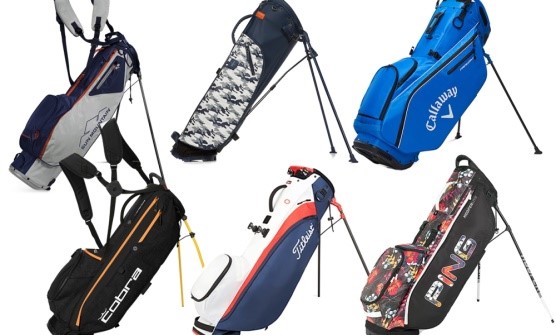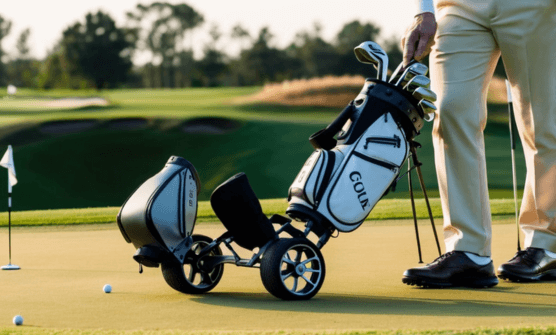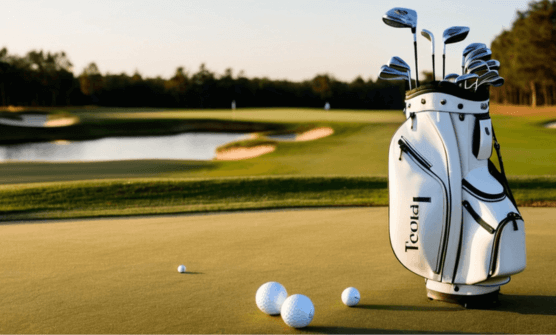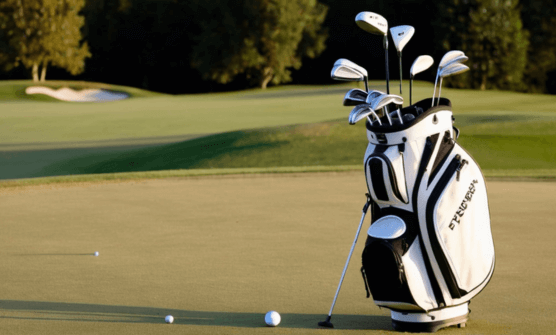Choosing the best golf club is the first step for a beginner. You can embark on this journey by understanding the right set of clubs. It can improve your learning curve and performance. The game of golf has a rich history and skill sets. Players can choose from different clubs depending on individual requirements. If you are a newcomer, choosing a golf club can be challenging. This guide offers insights and tips to help you select a golf club to suit your needs. Keep reading.
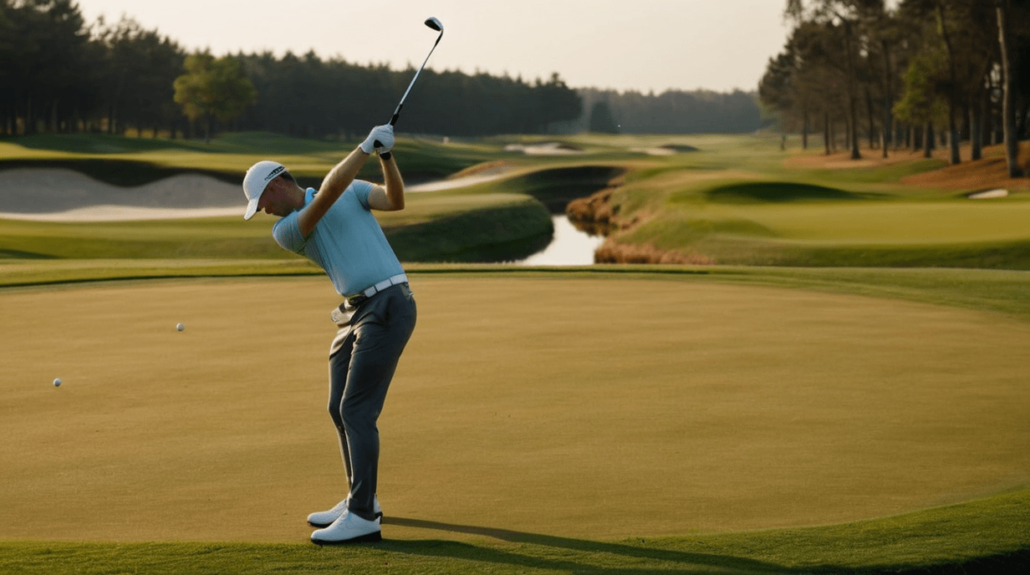
Club Composition
Engaging in golf can be an exciting experience. Selecting the right golf club composition is important for beginners. You should focus on assembling a simple and versatile set-up. This ensures you achieve smoother learning. The following makes up a club composition:
Fairway Wood
To get started, you will need a fairway wood designed for long-distance shots. This should be used off the tee to cover a wide ground from the get-go. A driver offers a significant distance, yet it is a challenge to control. A fairway wood is easier to hit off the ground and offers more accuracy.
Hybrids
A hybrid combines wood and iron and is a good option for beginners. It’s easier to hit compared to long iron. Its design promotes a favorable life and distance on long-distance shots. For a beginner, you won’t struggle when it comes to distance.
Irons
Irons are used for various shots on the golf course. This includes teeing off on shorter holes and approaching the green. A set of six irons and a pitching wedge provide a perfect range. Irons are useful in learning how to control short distances. They also help you to master striking.
One High Lofted Wedge
Having one high-lofted wedge is important for your startup lineup. A lob or sand wedge is important for short shots around the green. It also helps you navigate tricky spots such as sand traps. A Wedge has a high loft angle. This enables you to take shots requiring a step ascent and descent. It helps minimize rolling distance after landing. This is perfect for precision.
Putter
A putter is a common set-up in a golfer’s bag. It’s crucial for rolling the golf ball into the hole on the green. A high-quality putter improves your putting game. You should choose one that boosts your confidence when making final strokes.
Proper Fit
For a beginner, choosing the correct fit of your golf clubs can impact your game. A good fit ensures comfort and improves accuracy. It boosts your performance on the course. You can use a static fit method. This involves choosing a club that suits your playing style and physique. It should emphasize length, weight or flex and lie.
Length
To measure the length of a golf club, you need to start from the heel to the top of the grip. It’s crucial to know the measurement as this impacts your stance and posture during a swing. Very short clubs force players into a bend. It can lead to discomfort and inaccuracies in your swing. Very long clubs can cause an upright stance. This makes it difficult to maintain your control and stability.
You can use a tape measure at home to estimate the perfect club length. This allows you to achieve a natural and comfortable posture. It also ensures the clubhead is well-positioned for impact.
Lie Angle
The lie angle of a golf club is the angle formed by the club’s sole relative to the shaft. It plays an important role in how a club interacts with the ground at impact. It also impacts the golf ball’s flight path.
Before you get started, determine the perfect lie angle. Understand the relationship between your height and wingspan. This can affect how upright or flat you hold the club when you swing. If it’s incorrect, you can have consistent miss-hits such as hooks or slices. This happens if the clubface is not square at impact. You need to adjust the lie angle so the club can sit flat against the ground. It will improve your shot accuracy.
Weight or Flex
The weight of a club and the flex of its shaft impact your swing speed. It also affects the potential distance achievable with shots. Extra stiff and ladies’ shaft flexes should match a particular swing speed. You should choose a shaft with a flex matching your natural swing speed. This optimizes the distance and precision.
A very stiff shaft can cut the distance and lead to a lower trajectory. A very flexible shaft can lead to inconsistency in the direction. It can also cause higher trajectories. You should identify the right balance by experimenting or consulting expert players. This can help you control the ball and achieve the desired distances. By assessing various aspects of club fitting, you can make informed decisions. You can also enhance your gameplay through self-assessment.
Club Speed and Distance
It’s crucial to understand your club speed when choosing a club that matches your game. It impacts the flex and weight of the clubs you should choose. This plays an important role in the consistency and accuracy of your swing. You can do this by determining which club could hit a ball 150 yards. This strategy helps identify the appropriate layout of shaft flexibility. It also enhances your ability to achieve a consistent and powerful swing.
Using a 9 Iron or a Wedge from 150 Yards
If you reach for a wedge or a 9 iron to cover 150 yards, it means you have a higher-than-average club speed. In this case, an extra stiff shaft is the perfect choice for you. Extra stiff shafts accommodate players who generate significant swing speeds. It offers the perfect resistance to control and direct the swing power.
An 8 Iron Points Towards a Stiff Flex
Opting for an 8 iron for a 150-yard shot means that you have a powerful club speed, causing a stiff flex. A stiff shaft is ideal if you want to achieve large distances without maxing out your swing speed. It also provides a balance between flexibility and control. This enables you to achieve a powerful and not-so-aggressive swing.
A 7 Iron Regular Flex Shaft
If a 7-iron is your club of choice for this distance, a regular flex is the best option. A regular flex shaft is ideal for players with average swing speeds. It offers the right amount of flexibility and control. Thus, you can maximize distance and precision without using much force on every swing.
Soft Regular or Even a Ladies Flex
Selecting a golf club that is more lofted compared to a 7 iron for a 150-yard shot indicates a slower swing speed. In such a case, you can opt for a soft regular, senior flex or a lady’s flex, and this can benefit your game. These shafts have a unique design that provides greater flexibility. It also helps in maximizing your distance if you have more gentle swing speeds. It can boost your performance by compensating for the lower power output.
Budget
Finances are important when choosing golf clubs. There are various options with a wide range of prices. Brand reputation, material quality, and cutting-edge technologies influence golf club prices. First, establish Your Budget. Look at various options and determine how much money you’re willing to spend. It’s important to be realistic about commitment and frequency of play. Your budget should reflect your engagement level. If you only want to play a few times, don’t invest a lot of money.
You need to compare the price and performance of the golf club. Highly-priced clubs have advanced technology and high-quality equipment. But, the price tag may not equate to better performance for players. Focus on finding golf clubs that will elevate your game.
Ensure the club that you choose offers complete sets for beginners. This includes drivers, putter, wedges and irons. It helps in saving money compared to buying them.
Consider choosing pre-owned clubs to manage costs. You can find these on stores and online platforms. This allows you to get high end clubs at an affordable cost. But, inspect the equipment for wear and tear before buying.
Be brand-sensitive by reading reviews online. Some brands have a good reputation. Lesser-known clubs may offer high-quality equipment at lower prices. Focus on the specifics to avoid getting a low deal. If you have a low budget, spend on clubs where you will use the best equipment more often. As your golf game improves, you can upgrade by spending more.
Look for deals or promotions online, especially at the end of a season. Choose those deals that offer clubs a lower price.
Conclusion
Use these guidelines to select the perfect club and invest in your development. The goal is to choose clubs that feel natural and allow for adjustments during play. This enables you to concentrate on improving your skills and strategies. Note that these suggestions provide a great foundation for golfers. Your personal preference should guide your decision when choosing new clubs.



